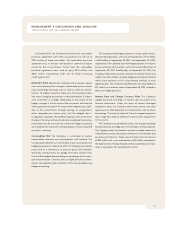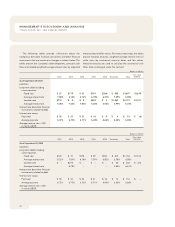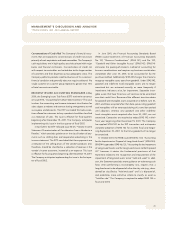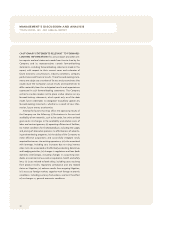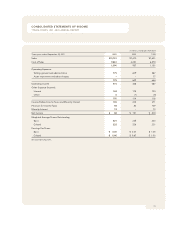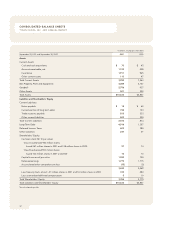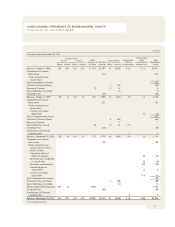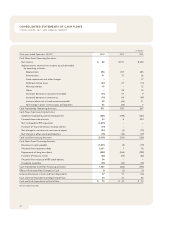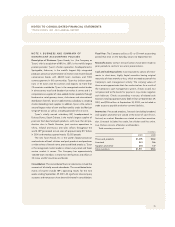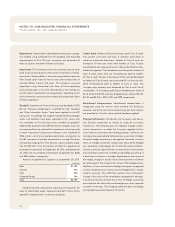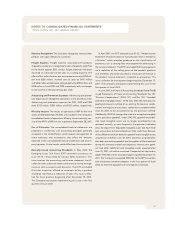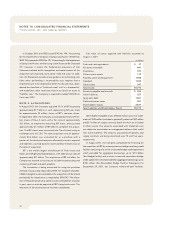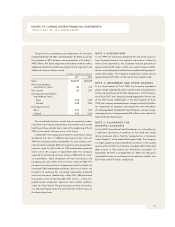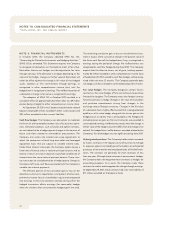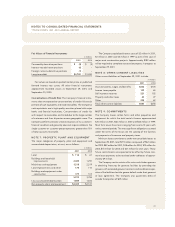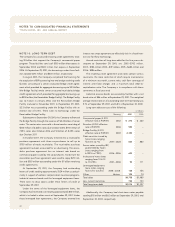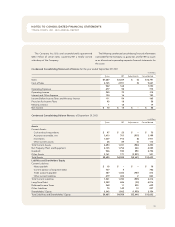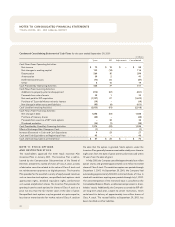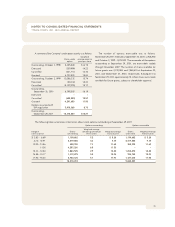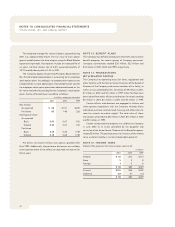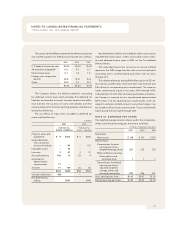Tyson Foods 2001 Annual Report Download - page 39
Download and view the complete annual report
Please find page 39 of the 2001 Tyson Foods annual report below. You can navigate through the pages in the report by either clicking on the pages listed below, or by using the keyword search tool below to find specific information within the annual report.
37
NOTES TO CONSOLIDATED FINANCIAL STATEMENTS
TYSON FOODS, INC. 2001 ANNUAL REPORT
Revenue Recognition: The Company recognizes revenue from
product sales upon delivery to customers.
Freight Expense: Freight expense associated with products
shipped to customers is recognized in cost of products sold. Prior
to the fourth quarter 2001, various freight expenses had been
classified as a reduction of net sales or as selling expense. The
effect of this reclassification was to increase revenue by $252 mil-
lion and $258 million, increase cost of sales by $410 million
and $416 million and decrease selling expense by $158 million and
$158 million in fiscal 2000 and 1999, respectively, with no changes
to net income or related earnings per share.
Advertising and Promotion Expenses: Advertising and promo-
tion expenses are charged to operations in the period incurred.
Advertising and promotion expenses for 2001, 2000 and 1999
were $337 million, $280 million and $301 million, respectively.
Minority Interest: The results of operations of IBP for the nine
weeks ended September 29, 2001, are included in the Company’s
consolidated results of operations. Minority interest primarily con-
sists of the 49.9% of IBP that was acquired on September 28, 2001.
Use of Estimates: The consolidated financial statements are
prepared in conformity with accounting principles generally
accepted in the United States which require management to
make estimates and assumptions that affect the amounts
reported in the consolidated financial statements and accom-
panying notes. Actual results could differ from those estimates.
Recently Issued Accounting Standards: In May 2000, the
Emerging Issues Task Force (EITF) reached a consensus on
Issue 00-14, “Accounting for Certain Sales Incentives.” This
issue involves the accounting and income statement classifi-
cation for sales subject to rebates and revenue sharing arrange-
ments as well as coupons and discounts. The EITF concluded
that sales incentives offered to customers to buy a product
should be classified as a reduction of sales. This issue is effec-
tive for fiscal quarters beginning after December 15, 2001.
The Company anticipates implementing this issue in the first
quarter of fiscal 2002.
In April 2001, the EITF released Issue 00-25, “Vendor Income
Statement Characterization of Consideration from a Vendor to
a Retailer,” which provides guidance on the classification of
payments such as slotting fees and cooperative advertising in
the income statement. The EITF concluded that these payments
are a reduction of the selling prices of the vendor’s products
and, therefore, should be classified as a reduction of revenue in
the vendor’s income statement, instead of as an expense. This
issue is effective for fiscal quarters beginning after December 15,
2001. The Company anticipates implementing this issue in the
first quarter of fiscal 2002.
In June 2001, the Financial Accounting Standards Board (FASB)
issued Statements of Financial Accounting Standards No. 141,
“Business Combinations” (SFAS 141), and No. 142, “Goodwill
and Other Intangible Assets” (SFAS 142). SFAS 141 eliminates the
pooling-of-interests method of accounting for business combi-
nations and requires any business combination completed after
June 30, 2001, to be accounted for by the purchase method.
Additionally, SFAS 141 changes the criteria to recognize intangible
assets apart from goodwill. Under SFAS 142, goodwill and indef-
inite lived intangible assets are no longer amortized but are
reviewed annually, or more frequently if impairment indicators
arise, for impairment. Separable intangible assets that have finite
lives will continue to be amortized over their useful lives. Because
of the different transition dates for goodwill and intangible assets
acquired on or before June 30, 2001, and those acquired after
that date, pre-existing goodwill and intangibles will be amortized
during this transition period until adoption, whereas new good-
will and other indefinite lived intangible assets acquired after
June 30, 2001, will not be amortized. Companies are required to
adopt SFAS 142 in their fiscal year beginning after December 15,
2001. The Company has applied SFAS 142 to the IBP transaction
and anticipates complete adoption in the first quarter of fiscal
2002. At that time goodwill will no longer be amortized.


